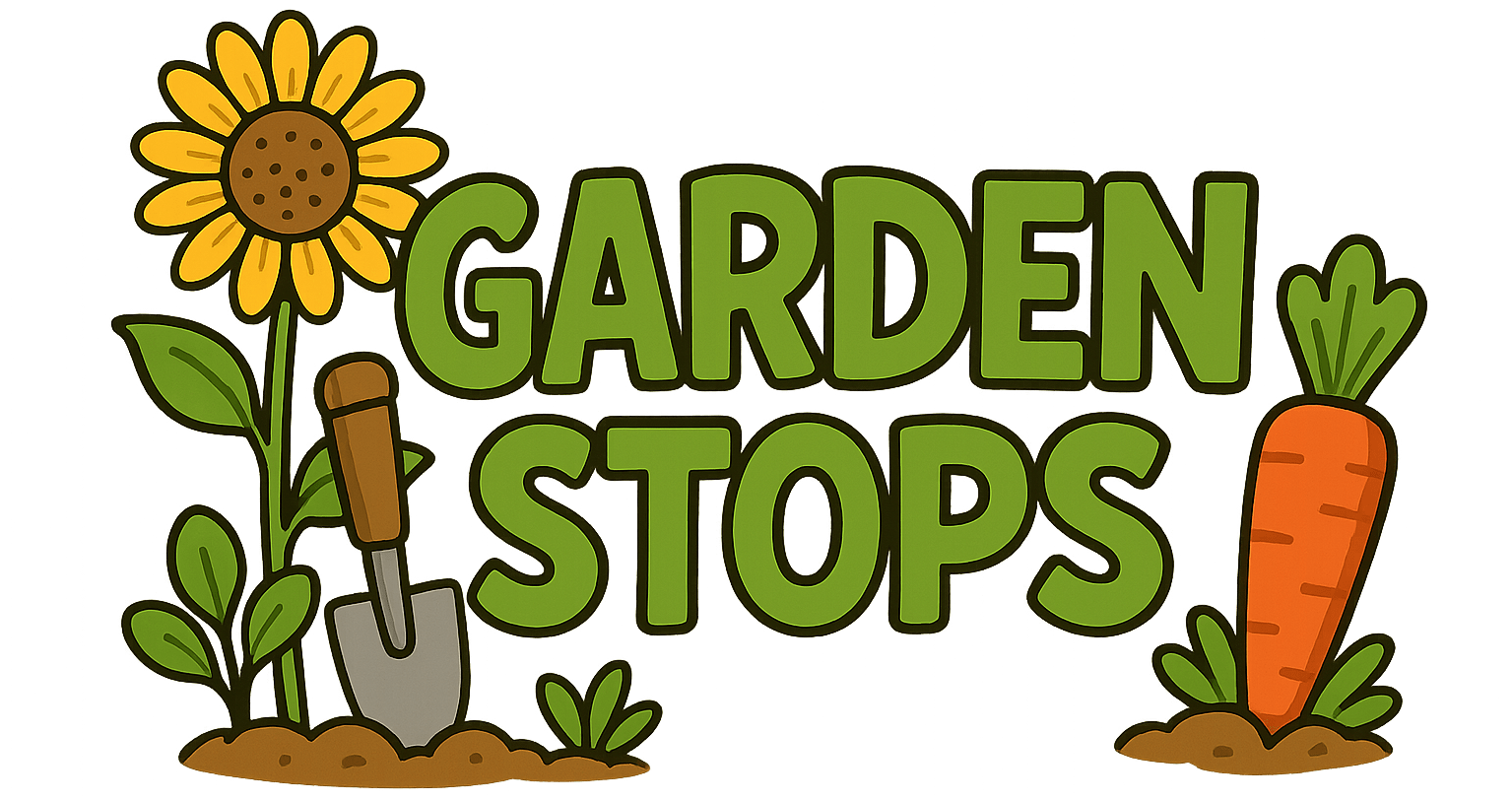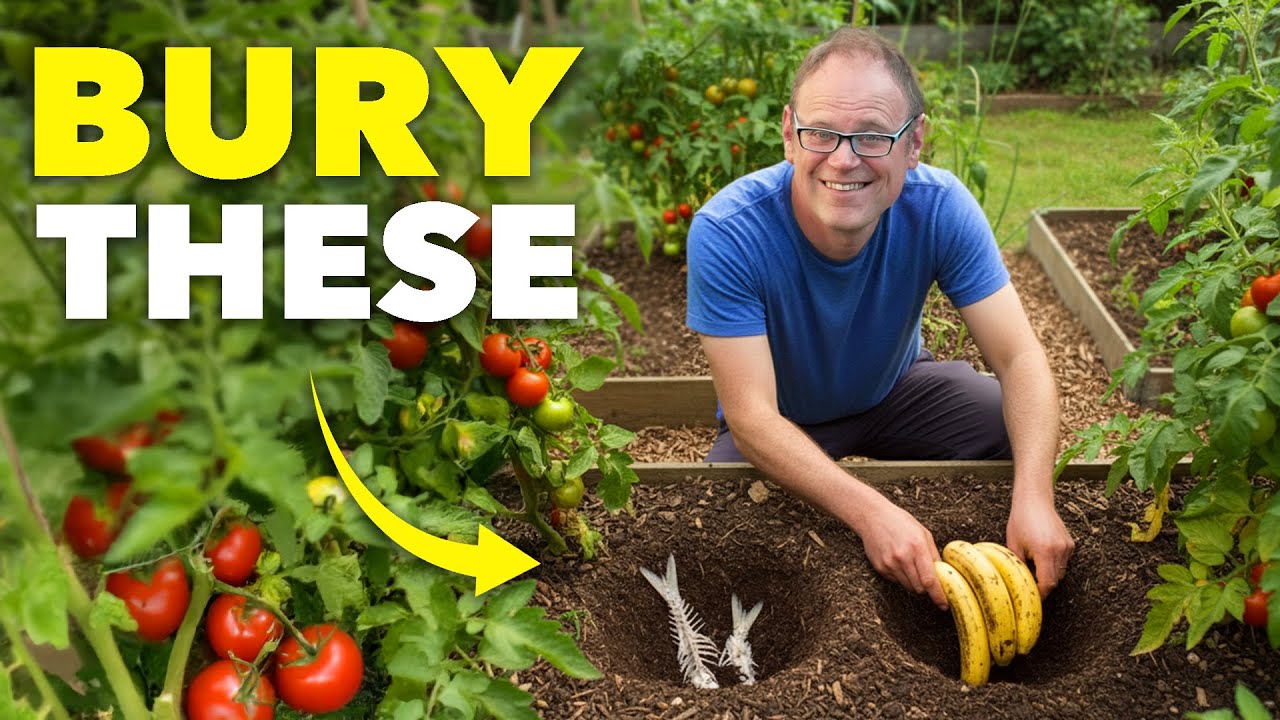Ever wondered what happens when you bury scraps under your tomatoes? In this post, you’ll discover the surprising results of my experiment and how this simple gardening trick can boost your tomato plants. Join me as I share what I learned from this hands-on experience and how it can benefit your garden.
Introduction
Ever since I first took up gardening, I’ve been oddly obsessed with myths, legends, and the whispering advice of fellow plant enthusiasts—some of which sound like they belong in fairy tales rather than fertile soil. One such legend promises that buried scraps—be they fish remains, banana peels, or coffee grounds—can somehow turn a mediocre tomato into a plump, juicy marvel. Naturally, I was skeptical but intrigued enough to embark on what I call my culinary-plant experiment: What happened when I buried scraps under my tomatoes? Would my correlation to a magic soil, or just another case of garden folklore trying to convince me that I’ve outsmarted Mother Nature?
As I delved into the world of organic waste, I couldn’t help but feel a mix of suspicion and hope. Could these scraps actually offer something? Or was this merely an exercise in wishful thinking? I decided to approach the project with a sense of curiosity, a dash of scientific rigor, and the knowledge that my garden might teach me something new—or at least provide some good storytelling along the way. So, grab a shovel—and maybe a banana peel—because I’m about to take you on a journey through dirt, mystery, and the undeniable allure of gardening myths.
The Mythical Roots of Burying Scraps in Your Garden
For centuries—well, at least as long as humans have been growing things—folks have swapped theories about boosting crop growth by burying scraps right in the earth. Whether it’s fish guts, grass clippings, or half-eaten bananas, the idea is that organic waste can subtly, yet significantly, turn your humble tomatoes into the showstoppers of your garden. It’s as if Mother Nature herself left a trail of breadcrumbs—literally—to keep us guessing and, hopefully, thriving.
This garden legend has taken many forms. Some swear that fish scraps provide a concentrated dose of nitrogen, perfect for leafy greens and, evidently, sprawling tomato vines. Others argue that potassium-rich banana peels help with flowering and fruiting, giving those tomatoes the nutrients they crave. From old rural farms to suburban backyard beds, burying scraps is promoted as an eco-friendly, sustainable method to recycle waste, nourish the soil, and perhaps even outsmart the local pests—because a well-fed plant, after all, is a resilient one. But as with all folklore, the question remains: does the science back up this gut instinct?
Myths aside, the real art here lies in separating fact from fable. Some gardeners tout this method as a quick, inexpensive way to give plants a nutritional boost—no synthetic fertilizers needed—while skeptics dismiss it as a colorful houseplant version of snake oil. The truth, I soon realized, might be buried somewhere in between, hidden under the soil in tales of trial and error passed down through generations. Armed with my shovel and a scientific curiosity, I set out to dig into this age-old question: does burying scraps under my tomatoes actually do anything at all?
My Tomato Experiment: Fish vs. Bananas Under the Soil
The real fun began when I decided to put this myth to the ultimate test—facing off my favorite kitchen scraps: fish remains and banana peels. I’m not just a curious gardener; I’m mildly obsessed with understanding what truly works, and this week, my backyard became a laboratory of organic experimentation. I marked my tomato plants with precision, like a mad scientist—the kind who’d probably get kicked out of the gardening club for taking things a little too far.
First, I carefully buried the fish scraps near the roots of one tomato bed, imagining a slow-release, nutrient-rich feast happening just beneath the surface. The fish bits, I reasoned, would release nitrogen and trace minerals as they decomposed—an all-natural fertilizer straight from the ocean’s pantry. Next, I tucked banana peels into another section, knowing that potassium and phosphorus could help with flowering and fruiting. The rest of my garden might’ve just been a plot of dirt, but for these plants, it was a nutritional battleground.
Over the following weeks, I watched, I waited, and I kept a garden journal—because what’s science without a little meticulous note-taking? Turns out, the fish scraps showed a noticeable boost in plant vigor; the leaves looked lush, and the tomatoes set fruit earlier than usual. The bananas, meanwhile, added their potassium punch, resulting in plumper, more evenly ripened tomatoes. It seemed that, at least in my backyard, this organic waste war was leaning toward the truth. Still, I wondered if what I saw was science or sheer coincidence—until the tomatoes were ripe enough for a taste test.
Does Burying Organic Waste Really Boost Your Garden’s Health?
As harvest time rolled around, my garden’s results finally laid bare what months of speculation had only hinted at. The tomatoes—those lush, plump orbs of sweetness—had indeed thrived under the influence of the buried scraps. They were larger, juicier, and seemingly healthier than their unamended counterparts. But the curious part was observing this phenomenon not just beneath the surface, but in the broader context of gardening advice and ecological sustainability.
Burying organic waste isn’t just about feeding your plants; it’s a small act of recycling that transforms kitchen scraps into garden gold. Fish remains and banana peels, when integrated properly into the soil, seem to break down and release nutrients that plants can readily absorb—an idea that appeals to both eco-conscious gardeners and those simply looking for an edge. Yet, it’s key to emphasize moderation and understanding your soil’s needs. If you dump a boatload of banana peels or fish scraps, you might end up with an odor problem or fungal issues. Balance and patience remain the best tools in this natural fertilizer toolbox.
Interestingly, my experiment also revealed that soil health doesn’t rely solely on organic additions but on the synergy of soil microbes, moisture, and root chemistry—all working together, whether I buried scraps or not. Still, the undeniable takeaway was that organic waste, when used thoughtfully, offers a promising, sustainable shortcut to healthier, more productive plants. And if you’re in the mood for more guided tomato-growing techniques, check out the masterclass video linked on that gardening site—because even the most seasoned green thumbs are always learning.
Frequently Asked Questions
1. Can burying scraps like fish or banana peels actually improve tomato growth?
Yes, when used properly, burying organic scraps such as fish remains and banana peels can enhance tomato growth by providing essential nutrients like nitrogen, potassium, and phosphorus. Fish scraps are high in nitrogen, which promotes lush foliage, while banana peels supply potassium, crucial for fruit development. However, the effectiveness depends on the amount used, soil conditions, and proper decomposition. It’s best to bury scraps a few inches below the soil surface and avoid overdoing it to prevent odor or pest issues.
2. How long does it take for buried scraps to decompose and benefit plants?
Typically, buried organic waste like fish scraps and banana peels can take anywhere from a few weeks to a couple of months to decompose fully, depending on soil temperature, moisture, and microbial activity. Warmer conditions accelerate decomposition, allowing nutrients to become available to plants relatively quickly. Frequent turning of the soil can also aid in faster breakdown. Patience is key, but the process results in enriched soil that supports healthier plant growth over time.
3. Are there any risks associated with burying scraps in your garden?
Certainly, there are some considerations to keep in mind. Overburdening your soil with organic waste can attract pests, produce unpleasant smells, or foster fungal growth if not buried deeply enough. Fish remains, in particular, can cause odor if decomposing near the surface. It’s important to bury scraps at least 6–8 inches deep, incorporate them into paper or compost layers when possible, and monitor garden health to avoid unintended consequences like mold or animal activity.
4. Is burying scraps better than traditional composting?
Both methods have their merits. Burying scraps directly in the soil provides immediate nutrients near roots, especially in small or temporary garden beds. Traditional composting creates a nutrient-rich humus over time, which can be more controlled and odor-free. If you’re aiming for rapid nutrient delivery and don’t mind a bit of a mess, direct burial works well. For larger, more permanent gardens, comprehensive composting might be more efficient and versatile.
5. Can I use this method for other crops besides tomatoes?
Absolutely. While tomatoes seem to respond positively to buried scraps, many other vegetables and herbs can benefit from this natural fertilization technique. Leafy greens, peppers, cucumbers, and even flowering plants may experience improved growth and yield. Still, it’s wise to tailor the amount and type of organic waste to each plant’s specific needs and avoid overfeeding, which can lead to nutrient imbalances or disease.
Final Thoughts
And so, what did I learn when I buried scraps under my tomatoes? That there’s truth in the anecdotes, a whisper of science in every myth, and a small, messy lesson in humility. Gardening, much like life, isn’t about instant results but about patience, observation, and an unending curiosity to explore the natural world’s truths. Organic scraps, when integrated thoughtfully and with care, can indeed give your garden a nudge in the right direction—boosting growth, enriching the soil, and perhaps even making you a believer in the old legends.
The true magic isn’t just in the fertilizer or the scraps, but in the act of trying, of experimenting. It’s in the small victories—the ripe tomatoes, lush leaves, and the satisfaction of knowing you’re giving back to your garden in the most natural way. If anything, this experiment has made me a little more conscious of my waste, a tad more patient with my plants, and infinitely more optimistic about what’s possible with just a little effort and a lot of organic matter. After all, sometimes, the best secrets in gardening are just buried a few inches beneath our feet.

